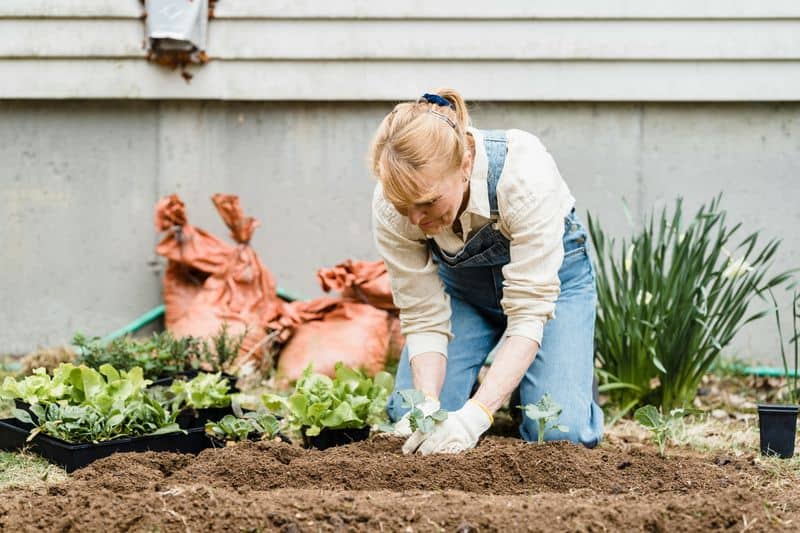Creating a dream garden is a delightful journey that combines creativity, nature, and personal expression.
For hobbyists and gardening enthusiasts, it’s a chance to craft a personal oasis that reflects their tastes and passions.
Here are 10 must-know ideas to inspire your gardening adventure and help you cultivate a space where both beauty and functionality thrive!
1. Themed Gardens

Themed gardens bring a unique touch to your outdoor space. Choose a theme that resonates with you, such as a Japanese Zen garden or a Mediterranean retreat.
Incorporating elements like raked gravel, topiary, or terracotta pots enhances the theme’s authenticity.
Themed gardens allow for creative expression and can transport you to different parts of the world.
They offer a cohesive design and a distinctive atmosphere, making your garden a unique reflection of your interests and style.
2. Water Features

Incorporating water features into your garden creates a calming ambiance. A small pond or waterfall can serve as the focal point, providing soothing sounds that enhance relaxation.
Water features attract wildlife, like birds and butterflies, adding life and movement to the garden.
They also reflect the sky and surrounding greenery, enhancing the aesthetic appeal.
Whether it’s a stone fountain or a bubbling brook, water elements bring tranquility and a sense of serenity to any garden.
3. No-Dig Gardening

No-dig gardening is an eco-friendly approach that improves soil health and reduces labor.
By layering organic matter, such as compost and mulch, directly on the ground, you create fertile soil without disturbing its structure.
This method minimizes weeds and retains moisture, leading to healthier plants.
No-dig gardening is perfect for those seeking a low-maintenance, sustainable way to cultivate vegetables and flowers.
It enriches your garden’s ecosystem, promoting biodiversity and supporting a thriving, vibrant landscape.
4. Wildlife-Friendly Gardens

Designing a wildlife-friendly garden invites nature into your yard. By planting native species, you provide habitats for birds, bees, and butterflies.
Incorporate bird feeders, nesting boxes, and water sources to attract diverse wildlife.
This creates a lively ecosystem and supports local biodiversity.
Wildlife-friendly gardens are not only beneficial for the environment but also offer endless opportunities for observation and enjoyment.
Embrace nature by making your garden a sanctuary for wildlife and a haven for your senses!
5. Herb Spirals

Herb spirals are an ingenious way to grow a variety of herbs in a compact, vertical structure.
The spiral design creates microclimates that suit different herbs’ needs, maximizing space and efficiency.
This feature is not only practical but also visually striking, adding architectural interest to your garden.
Herb spirals provide easy access to fresh herbs for cooking, making them a favorite among culinary enthusiasts.
They offer a sustainable and attractive solution for small gardens or urban settings.
6. Vertical Gardening
Vertical gardening is a creative solution for small spaces. It allows plants to grow upwards, making it ideal for balconies and compact areas.
By using trellises, wall planters, or hanging pots, you can create a green tapestry that is both beautiful and space-efficient.
This technique is perfect for growing herbs, flowers, and even vegetables. It adds a lush, vibrant feel to urban settings, transforming any wall into a living piece of art.
Vertical gardening is a smart way to maximize your gardening space.
7. Container Gardening

Container gardening is a versatile method suitable for any space. It involves growing plants in pots or containers, allowing for flexibility in placement and arrangement.
This approach is perfect for patios, balconies, or areas with poor soil quality. Containers come in various sizes and styles, offering endless possibilities for creativity.
Whether you’re cultivating flowers, herbs, or vegetables, container gardening adds color and personality to your outdoor spaces, making gardening accessible and fun for everyone.
8. Perennial Borders

Perennial borders are a classic garden feature, known for their lasting beauty and low maintenance.
By selecting a mix of flowers that bloom at different times, you ensure continuous interest throughout the seasons.
These borders add color, texture, and structure to the garden, creating a cohesive and dynamic design. Perennials return year after year, reducing the need for replanting.
They are ideal for creating a vibrant, ever-changing landscape that requires minimal upkeep!
9. Edible Landscaping

Edible landscaping combines beauty with functionality by integrating edible plants into your garden design.
It’s a practical and sustainable approach that allows you to harvest fresh produce right from your yard.
Grow vegetables, fruits, and herbs alongside ornamental plants for a stunning, productive landscape. This method encourages healthy eating and reduces your carbon footprint.
Edible landscaping transforms your garden into a bountiful and attractive space, offering visual appeal and fresh food for your table.
10. Natural Stone Pathways

Natural stone pathways add charm and functionality to your garden. Their rustic, organic look complements any landscape, guiding visitors and defining spaces.
These paths enhance the garden’s flow and accessibility, encouraging exploration and leisurely strolls.
Stone pathways require little maintenance and are durable, standing the test of time.
They provide a natural, elegant way to navigate through your garden, connecting different areas and creating a harmonious outdoor environment.


